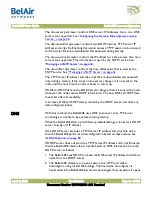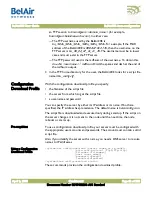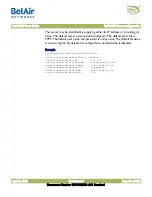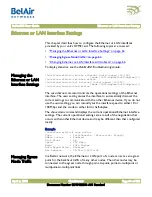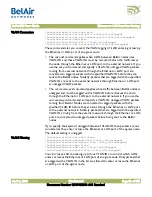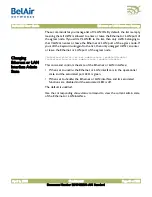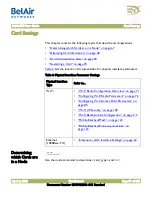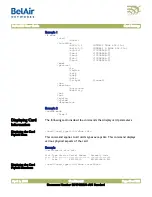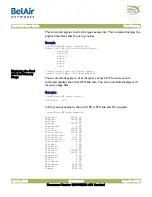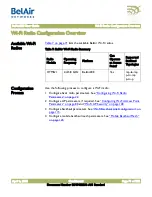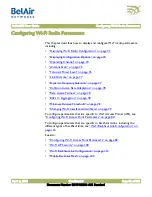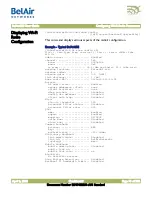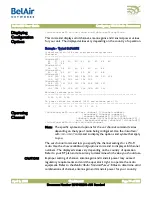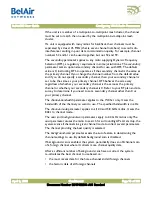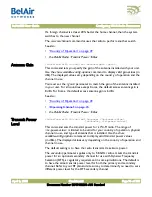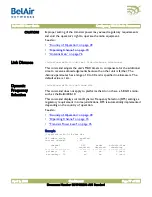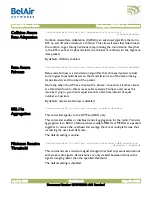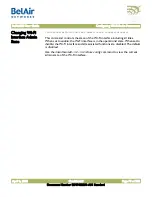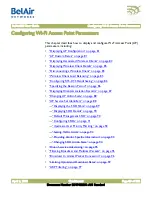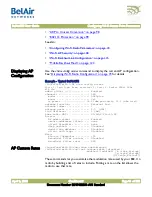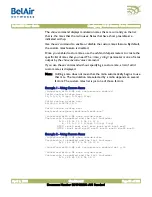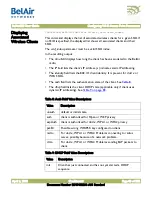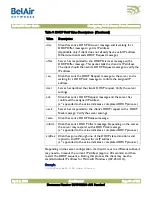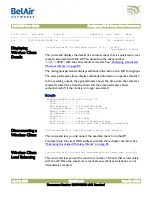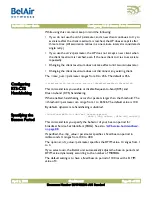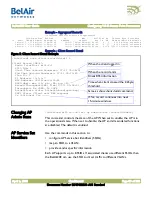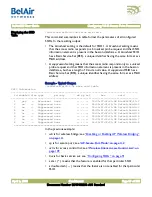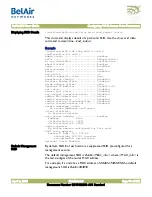
BelAir20E User Guide
Configuring Wi-Fi Radio Parameters
April 2, 2012
Confidential
Document Number BDTM02201-A01 Standard
If the unit is a member of a multipoint-to-multipoint mesh cluster, the channel
must be set to match the one used by the multipoint-to-multipoint mesh
cluster.
If a unit is equipped with many radios for backhaul, their channels must be
separated by at least 35 MHz (that is, seven channel numbers) to avoid radio
interference resulting in poor data communication quality. For example, channel
numbers 53 and 61 can be used together, but not 53 and 59.
The
secondary
parameter applies to any radio supplying Dynamic Frequency
Selection (DFS), a regulatory requirement in some jurisdictions. The
secondary
parameter sets an optional secondary channel for use with DFS. The default
value is 0, instructing DFS to operate as if the secondary channel is the same as
the primary channel. If you change the channel number from the default value
and if you do not specify a secondary channel, then your secondary channel is
set to be the same as your primary channel. DFS behaves the same way
regardless of whether your secondary channel is the same as the primary
channel or whether your secondary channel is 0. Refer to your RF plan and site
survey to determine if you need to set a secondary channel other than 0 or
your primary channel.
The
channel-bandwidth
parameter applies to the WCSv1 only. It sets the
bandwidth of the channel you want to use. The specified bandwidth is in kHz.
The
channel-mode
parameter applies to all 2.4 and 5.8 GHz radios. It sets the
802.11n channel mode.
The
auto
and
background-scan
parameters apply to 2.4 GHz radios only.The
auto
parameter causes the radio to search for surrounding APs. At startup, the
system scans all channels in a given channel mode to collect several parameters.
The channel providing the best quality is selected.
The
background-scan
parameter assists the auto feature in determining the
channel settings to use. By default background scan is disabled.
If background scan is enabled, the system periodically does an off-channel scan
of a foreign channel where it collects more channel quality data.
After a sufficient number of background scans have occurred, the system
re-calculates the best channel to use based on:
• the most recent data for the home channel and all foreign channels
• the historic data of all foreign channels

